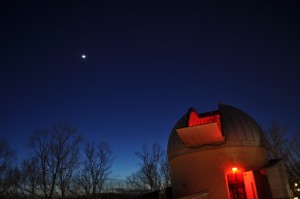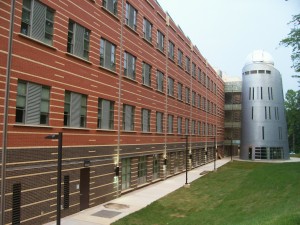Don’t Miss This! In 2013, this is the only one of six major (and predictable) meteor showers that won’t be significantly washed out by a bright moon. Look for meteors radiating from the constellation Bootes. The Quadrantid meteor shower will reach its maximum rate of activity. Some meteors will be visible each night from 1 Jan to 6 Jan, but the best show will be on this evening. The maximum number of meteors expected to be visible from a dark location is around 80 per hour (ZHR). The Moon will be 22 days old at the time of peak activity, and so will present minimal interference.
January’s Full Moon is the “Old Moon”, “Wolf Moon”, “Ice Moon”, “Moon after Yule”, or “Paush Poornima”

Dr. Michael Summers and Implications of Finding Alien Life in Research Hall Science Showcase. 1st talk at 6PM, same talk at 6:45PM, observing starts at 6;30PM until 8PM.
Campus Map – The George Mason University Observatory at the Fairfax Campus building Research Hall formerly known as Research I.

Manuela Dal Forno and The World of Lichens – Research Hall Science Showcase (especially recommended for kids). 1st talk at 6PM (weather permitting), same talk at 6:45PM (weather permitting), observing starts at 6:30PM until 8PM (weather permitting).
Campus Map – The George Mason University Observatory at the Fairfax Campus building Research Hall formerly known as Research I.
Tuesday 26 February 2013: This date IF AND ONLY IF 19 February 2013 canceled due to weather. 1st talk at 6PM, same talk at 6:45PM, observing starts at 6:30PM until 8PM.
see http://cantonbecker.com/retrograde for details…
February’s Full Moon is the “Snow Moon”, “Hunger Moon”, “Storm Moon”, “Candles Moon” or “Magh Poornima”

THIS EVENT HAS BEEN CANCELLED DUE TO IMPENDING WEATHER
1st talk at 6PM (weather permitting), same talk at 6:45PM (weather permitting), observing starts at 6:30PM until 8PM (weather permitting).
Campus Map – The George Mason University Observatory at the Fairfax Campus building Research Hall formerly known as Research I.

